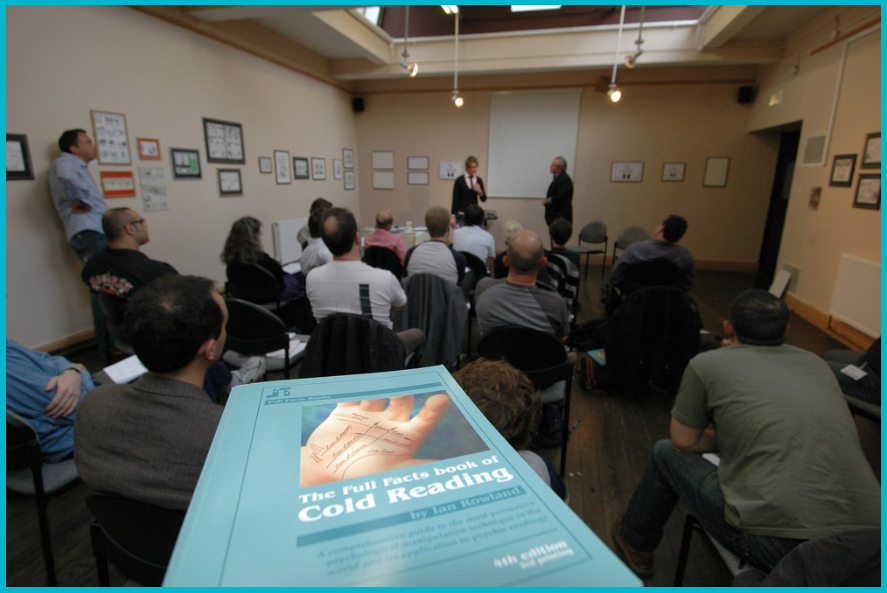Cold Reading Techniques: The Secret Skill Behind Influence, Rapport, and Persuasion
Cold Reading Techniques: The Secret Skill Behind Influence, Rapport, and Persuasion
When most people hear the phrase cold reading techniques, they imagine fortune tellers, tarot readers, or psychic entertainers dazzling audiences with uncanny insights. But the truth is, these techniques are not about mysticism at all. They are about communication. They are about knowing how to talk to people in ways that make you sound insightful, trustworthy, and persuasive.
In this post, we’ll explore what cold reading techniques are, how they work, and why they matter far beyond the psychic world. Whether you’re in sales, leadership, coaching, or just want to sharpen your conversational skills, understanding cold reading techniques can give you a practical edge in almost any situation.
What Are Cold Reading Techniques?
Cold reading techniques are conversational strategies that make your words seem accurate, relevant, and meaningful to someone you’ve only just met.
A psychic might use them to appear as though they have supernatural insight. A business professional might use them to build instant rapport with a client. A speaker might use them to engage an audience on a personal level.
At their core, cold reading techniques are about three things:
Establishing rapport quickly
Creating the illusion of personal insight
Encouraging people to feel understood
The Classic Cold Reading Techniques
Here are some of the most well-known cold reading techniques, drawn from decades of study and teaching:
1. The Barnum Statement
A statement so general it applies to almost everyone, yet sounds personal. For example:
“You sometimes feel confident and capable, but other times you doubt yourself.”
It works because people interpret it in a way that feels specific to them.
2. The Rainbow Ruse
A clever way of flattering someone by attributing opposite qualities. For example:
“You’re usually very patient, but when someone pushes too far, you won’t tolerate it.”
3. The Fuzzy Fact
A vague but plausible statement, like:
“I sense there was a recent change in your routine.”
The client supplies the meaning, which makes you sound accurate.
4. The Push Statement
Presenting a statement that invites correction, so you still win.
“I get the feeling you’re quite organised.”
If they agree, you’re right. If they disagree, you can say, “Yes, I thought you might be the sort of person who prefers flexibility.”
5. The Jacques Statement
Suggesting that someone used to be one way but has changed.
“You were shy when younger, but you’ve grown more confident over time.”
It resonates because most people feel they’ve evolved.
These cold reading techniques are simple, but when combined, they create the impression of deep, intuitive knowledge.
Cold Reading Techniques in Business
Cold reading techniques are not limited to psychic performances. In fact, they are powerful tools in business and everyday communication.
Sales: By using rapport-building statements, you help potential clients feel understood before you even make a pitch.
Negotiation: By demonstrating insight into someone’s position, you lower resistance and open the door to agreement.
Leadership: By articulating what people feel but haven’t expressed, you inspire trust and credibility.
For example, a salesperson might say:
“You’re the sort of person who likes to weigh options carefully, but once you’ve made a decision, you stick with it.”
This feels personal, flattering, and encourages the client to think, “Yes, that’s me.”
Why Cold Reading Techniques Work
Cold reading techniques are effective because they exploit universal human tendencies:
The desire to be understood: People like to feel that someone “gets” them.
The cooperation principle: Listeners naturally interpret vague statements in ways that make sense to them.
The power of confirmation bias: People remember the “hits” and forget the “misses.”
This is why psychic readings feel accurate, and why the same techniques work so well in conversations, presentations, and sales meetings.
How to Practise Cold Reading Techniques
If you want to improve your own use of cold reading techniques, try these exercises:
Listen actively: The more someone talks, the easier it is to reflect their words back in meaningful ways.
Practise Barnum statements: Think of phrases that sound unique but apply broadly.
Notice opposites: Use the Rainbow Ruse to cover both sides of a personality trait.
Frame statements as questions: “I sense you’ve recently been rethinking some priorities, is that right?” invites validation.
Experiment in safe settings: Try these techniques with friends in casual conversation. You’ll be surprised how often they “land.”
The Ethical Side of Cold Reading Techniques
It’s important to address the ethics. Cold reading techniques can be misused to manipulate, deceive, or exploit. That’s why professional trainers (myself included) teach them as communication tools, not as tricks to con people.
Used responsibly, cold reading techniques help you connect, influence, and inspire. They can strengthen relationships, build trust, and even make you a more effective leader.
Cold reading techniques are not magic, but they feel magical. They work because they tap into the timeless human need to feel seen, heard, and understood.
Whether you’re standing on a stage, closing a deal, or chatting with a stranger at a party, cold reading techniques can help you establish rapport, build trust, and communicate with impact.
Like any skill, they take practice. But once you master them, you’ll have one of the most versatile and powerful communication tools at your disposal.





